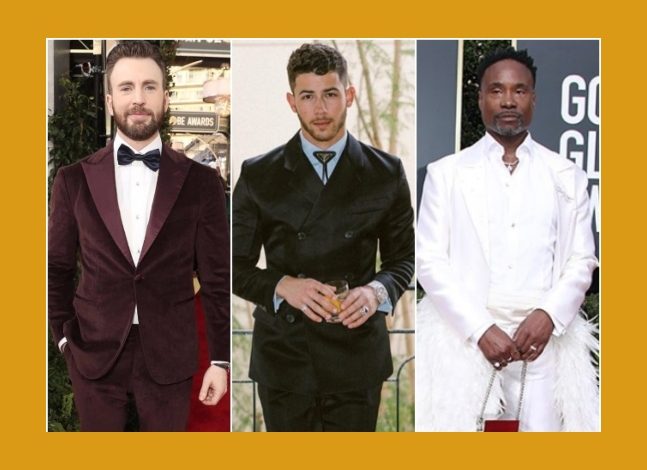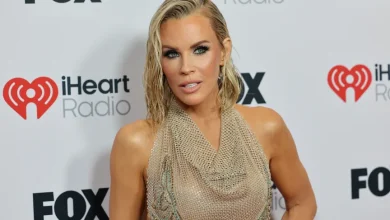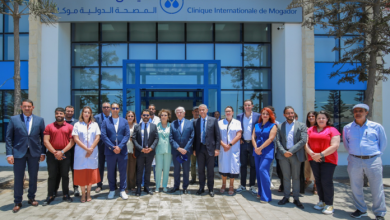Nick Jonas and Billy Porter’s Bold Message About Diabetes Everyone Needs to Hear

When celebrities speak openly about health challenges, they have the potential to shift public perception, reduce stigma, and empower people who share those challenges. In recent months, Nick Jonas and Billy Porter have joined forces—along with other public figures—to deliver a bold, meaningful message about diabetes that “everyone needs to hear.” Their advocacy is timely, and it carries layers of significance: not just for people with diabetes, but for society at large. What they’re saying, why it matters, and how it can change the conversation around diabetes.
The Groundswell: What Jonas and Porter Are Saying
Nick Jonas: Type 1, openness, challenging myths
Nick Jonas was diagnosed with type 1 diabetes at age 13. Over the years, he has become one of the most visible public figures with diabetes — someone who doesn’t shy away from discussing the daily realities, the challenges, and the opportunities that come with it.
In interviews, Jonas often emphasizes that diabetes doesn’t have to define or limit you. When he was first diagnosed, he was concerned it might derail his dreams in music and performance. But very early on, he returned to the stage, determined to show that he could continue with his career.
He also uses his platform to correct misconceptions. For example, in a new campaign launched by his nonprofit (Beyond Type 1), Jonas challenges common myths — such as the notion that people with diabetes must never have sugar, or that managing diabetes means one is too fragile to live a full life. He underscores that when blood sugar gets low, people do need sugar; that genetics and factors beyond lifestyle often play major roles; and that one’s performance, stamina, and reliability are not inherently compromised by diabetes.
His advocacy doesn’t just raise awareness; it humanizes the condition. He shares stories of his own struggles, the uncertainty of balancing blood sugar during tours, the emotional toll, and the resilience required.
Billy Porter: Type 2, disclosure, de-stigma
Billy Porter’s journey is different in type but not in spirit. In 2007 — a calamitous year in which he also faced bankruptcy and was later diagnosed with HIV — Porter learned he had type 2 diabetes. For years, Porter stayed quiet about it. The shame, stigma, and personal gravity of being publicly vulnerable held him back. But in a 2021 piece in The Hollywood Reporter, he opened up — in part to make it easier for others to speak.
In his disclosure, Porter makes a key point: type 2 diabetes is often unfairly framed as being solely the result of poor lifestyle choices. He pushes back: there are many contributing factors — genetics, socioeconomics, environmental stressors, access to healthy food, health care inequities — that play major roles. In the video for Jonas’s nonprofit campaign, Porter tells a makeup artist who fears she “messed up” that it isn’t her fault — that being told she’s at risk doesn’t mean she did something terrible.
By speaking candidly, Porter invites empathy, honesty, and a reduction of shame for all who face chronic health challenges. His message is that diagnosis is not a moral failing, and that people living with diabetes deserve dignity and compassion.
The Bold Message: What We All Need to Hear
From what these two voices (and the campaign they are part of) convey, several resonant truths emerge. Here are the key takeaways — their “bold message” — along with why each matters.
1. Diabetes is nuanced — not a one-size-fits-all story
Too often, the public narrative about diabetes is simplistic: “eat less sugar,” “lose weight,” or “you brought it on yourself.” Jonas and Porter push back hard on that. Jonas, living with type 1, reminds people that he often needs sugar (glucose) when his levels dip. Porter warns against internalizing blame in type 2.
There is danger in treating “diabetes” as a single entity. Type 1 and Type 2 differ in causes, treatment modalities, complications, and lived experience. Acknowledging this complexity fosters empathy and better policy, research, and care.
2. Stigma hurts; openness heals
One of the most powerful aspects of their work is destigmatizing the disease. People with diabetes often face intrusive questions, judgment, and misconceptions about their worth or lifestyle. In the Jonas-led video, scenes dramatize people being asked inappropriate or misinformed questions.
By owning their narratives — Jonas as a successful artist resilient in the face of type 1, Porter as a bold figure living with type 2 — they reframe diabetes from a shameful secret to a part of life that can be managed, understood, respected.
3. Knowledge dispels fear and ignorance
Misinformation abounds in the public sphere: that people with diabetes can never eat sugar; that they are fragile; that type 2 is purely lifestyle-driven. The campaign’s “misconception sequence” plays on how many of these myths still persist.
By offering accurate, accessible information — based in science, medicine, and lived experience — Jonas, Porter, and their collaborators are arming people with tools: to understand symptoms, seek testing, advocate for themselves or loved ones, and challenge bad assumptions.
4. No one should face this alone — community matters
Both figures emphasize that a diagnosis doesn’t have to isolate you. Jonas, through Beyond Type 1, helps build networks, share stories, connect families, and supply resources. Porter’s disclosure implicitly invites others to share without shame.
Social support, peer networks, advocacy, shared learning — these human connections are essential in chronic disease management.
5. Health disparities and equity are part of the conversation
Porter’s message implicitly highlights systemic issues: that access to care, healthy food, preventive screening, education, social determinants of health, and genetic risk all count. His emphasis that “over 50% of us get it due to hereditary genetics” is a rejection of simplistic blame narratives.
Jonas, in his advocacy, also speaks to access: talking about affordability of insulin, access to technologies like continuous glucose monitors (CGMs), and disparities in care. To have impact, awareness must connect to justice: making sure no one is left behind.
Why Their Message Resonates — And Why We Haven’t Heard Enough of It
The power of representation
Seeing someone like you — your age, your identity, with challenges you might share — succeed, speak, and live boldly with a chronic condition is powerful. Jonas’s visibility as a young, successful artist living with type 1 immediately offers hope to younger people diagnosed. Porter, as a Black gay man in entertainment, breaking silence about type 2 and HIV, brings intersectional representation to the table. Their voices help fill a void where silence often reigns.
Celebrity platform as catalyst
Jonas and Porter reach millions — their platforms amplify messages that might otherwise stay within medical or advocacy circles. When they speak, media takes notice, public discourse shifts, and partnerships (nonprofits, medical organizations, campaigns) have leverage.
The moment is right
Public interest in health, wellness, chronic disease, equity, and how our systems support or fail vulnerable folks is high. Post-pandemic, more people are attentive to health vulnerabilities, systemic inequities, and the importance of collective awareness. Their message rides that wave.
Also, medical technology — like continuous glucose monitors, insulin pumps, digital health, telemedicine — is evolving rapidly. Public conversations about diabetes need voices guiding responsible awareness, research funding, and access.
The danger of complacency
Despite the prevalence of diabetes globally, persistent myths, stigma, and misunderstandings still thrive. Silent voices, shame, and fatalism keep many from seeking early diagnosis or care. When celebrities silence their experience, that perpetuates the invisibility and stigma. Jonas and Porter are refusing that silence.
What Everyone — With or Without Diabetes — Can Do With This Message
This isn’t just a message for people with diabetes. There are lessons, responsibilities, and actions for everyone:
1. Check your assumptions
If you believe “people with diabetes can never have sugar,” or “type 2 = lazy,” or “diabetics are always sickly,” you’re holding onto myths. Listen to voices like Jonas and Porter. Learn the nuance. Replace judgment with curiosity and compassion.
2. Watch for symptoms — early diagnosis matters
Type 1 and type 2 manifest differently, but certain signs should never be ignored: unexplained weight loss, excessive thirst, frequent urination, fatigue, blurred vision, slow healing. Jonas describes how his weight dropped rapidly before diagnosis. Timely screening and medical follow-up can change outcomes.
3. Support access, equity, and policy
Awareness is not enough. Advocacy must push for affordable insulin, access to devices (CGMs, insulin pumps), insurance coverage, subsidies, rural and low-income access, and research funding. Speak up in your community, support organizations, vote for health equity policies.
4. Encourage openness, not secrecy
If someone you know has diabetes, resist treating it as a taboo. Let them speak about it. Ask how you can help. Build understanding, not distance.
5. Celebrate resilience and agency
Living well with diabetes is often about daily management, trial and error, adapting, and small victories. Whether you know someone with diabetes or manage one yourself, celebrate the agency, courage, and commitment involved.
Deeper Reflections: The Cultural Significance of Their Message
Shifting narrative from burden to part of identity
Chronic disease is often framed as a burden, risk, or tragedy. But what Jonas and Porter do is integrate it into identity — as something that coexists with success, creativity, purpose, and agency. In doing so, they push toward a view where health challenges are a dimension of life, not its definition.
Intersectionality matters
Porter’s story reminds us that chronic disease doesn’t occur in a vacuum — he faced financial collapse, HIV, systemic stigma, and mental health stressors alongside diabetes. His layered identity (Black, gay, in entertainment) intersects with health. His openness invites us to see health as embedded in social structures — race, class, gender, access to care — not just biology.
The ripple effect
When a high-profile person speaks up, it opens space for others to be braver. The ripple— people in smaller communities, marginalized groups, younger people — see it’s okay to voice, to seek help, to be critical of stigma. That ripple can reshape community norms, support networks, and even policy.
The role of narrative in medicine
Medical science often treats disease mechanistically — symptoms, biometrics, interventions. But illness is lived, emotional, relational, social. Jonas and Porter bring the narrative back into medicine — the stories, the shame, the identity, the resilience. That matters to clinicians, caregivers, patients, researchers — it demands that human stories be part of health discourse.
Challenges, Critiques, and Limitations (With a Compassionate Lens)
No advocacy is perfect, and even bold voices face challenges:
- Oversimplification risk: In trying to communicate to mass audiences, nuance can be lost. For instance, emphasizing genetics over lifestyle — though valid — might be misconstrued as downplaying modifiable risk factors in type 2. The balance of message is delicate.
- Access disparities: Jonas and Porter speak from high-visibility platforms. Their access to top medical care, advanced devices, and resources may not mirror the reality of many people with diabetes in underserved regions. Some advocates may critique that messages from celebrities can unintentionally seem distant or idealistic.
- Sustainability: Attention is fickle. A campaign or moment of viral messaging has impact, but sustaining public pressure, funding, education, and policy change requires long-term commitment.
- Public backlash or misinterpretation: Celebrity statements are sometimes met with skepticism — people might accuse them of “virtue signaling” or being out of touch. Navigating critique while maintaining authenticity is hard.
- Emotional burden: For Jonas, Porter, and others, sharing personal health stories can feel exposing, emotional, and taxing. There is a vulnerability cost to advocacy.
But acknowledging these challenges doesn’t diminish their message — it underscores how courageous and necessary it is.
Real-World Examples & Anecdotes That Amplify the Message
- In the Jonas Nonprofit’s “Beyond the Misconceptions” video, Jonas responds to an interviewer who says, “You can’t have juice — you have diabetes?” He counters, “People with diabetes need sugar when glucose is low.” That moment flips the script on simplistic assumptions.
- In the same campaign, Porter, speaking to a makeup artist concerned she’d “messed up,” offers one of the most humanizing lines: “Pull yourself together. There are many different factors … over 50% of us get it due to hereditary genetics.”
- Jonas was initially hospitalized with blood sugar levels over 700 mg/dL (very high) before diagnosis. He has shared that in the early days he lost weight rapidly, was constantly thirsty, and felt something was off long before the diagnosis.
- Porter’s 2021 revelation came after 14 years of silence. He talked about the shame he carried — compounded by the silence around HIV — and how disclosure could be an act of liberation. That decision ripples beyond just diabetes.
- Jonas co-founded Beyond Type 1, which leverages storytelling, peer support, education, and digital tools to connect people across geographies.
- Jonas wrote the song “A Little Bit Longer” about his experience with type 1, especially the emotional side, during a dysregulated blood sugar day. That song has become a touchpoint for fans and people with diabetes who feel emotionally isolated.
These examples show how their advocacy isn’t abstract: it’s grounded in lived moments, contradictions, and raw honesty.
What Success Would Look Like — How to Know the Message Hit Home
If we want to know whether Jonas and Porter’s message is making a difference, here are indicators to watch:
- Increased public understanding: Surveys showing fewer misconceptions (e.g. fewer people believing that diabetics can never eat sugar, or that type 2 is solely lifestyle-driven).
- More early diagnoses: People recognizing symptoms, seeking medical checkups sooner, reducing complications.
- Policy shifts and funding: Greater public support for subsidized insulin, coverage for continuous glucose monitoring, funding for diabetes research or equity programs.
- Narrative change in media: Less sensational, stigmatizing portrayals of diabetes in movies, TV, journalism; more nuanced, empathetic storytelling.
- Stronger community voices: People with diabetes feeling safer to speak out — in schools, workplaces, families — with fewer fears of shame or misunderstanding.
- Sustained support for NGO campaigns: Growth and sustainability of Who organizations like Beyond Type 1, fundraising successes, expanded reach, especially in under-resourced communities.
- Cross-health conversation: Framing other chronic conditions (heart disease, kidney disease, autoimmune disease, mental health) with similar empathy, intersectionality, and narrative inclusion.
If, over time, these ripples appear, then the bold message will have done more than just inform — it will have transformed.
A Call to Action: What You Can Do Today
Here’s how you — whether you have diabetes, know someone who does, or are just a concerned citizen — can engage meaningfully with this message:
- Educate yourself: Read trustworthy sources about type 1 vs type 2 diabetes, management strategies, technological tools, and advocacy issues.
- Share responsibly: If you share content about Jonas and Porter’s campaign, add your own perspective, correct misconceptions, and invite conversation.
- Be compassionate in conversation: If someone reveals they have diabetes, respond with respect, ask how they wish to share, and avoid judgment.
- Advocate for access: Write to lawmakers, support nonprofits, donate to campaigns that push for affordable insulin, coverage for devices, community outreach.
- Watch for symptoms: In yourself or loved ones. Don’t delay medical consultation when things feel off.
- Join community: If diabetes affects you or someone close, engage in support groups (online or offline), share stories, and connect with others.
- Hold media to account: When health stories are sensationalized or stigmatizing, comment, correct, and raise awareness of nuance.
- Lift voices from within: Promote stories from people with diabetes across backgrounds — not just those with celebrity platforms. Their voices are essential.
In Conclusion: Why This Bold Message Matters
Nick Jonas and Billy Porter are more than celebrities sharing health disclosures. They are becoming agents of narrative change. Their bold message demands that we:
- See diabetes — in all its forms — with nuance and empathy.
- Replace shame and ignorance with understanding and support.
- Recognize that health is not just a personal burden but a social issue entwined with equity, representation, and access.
- Encourage openness, courage, and human dignity in discussions of chronic illness.
The world needs to hear this message because it reminds us that behind every diagnosis is a human life — with dreams, challenges, resilience — and that a disease doesn’t have to be a wall, but can be a bridge to connection, awareness, and collective progress.




